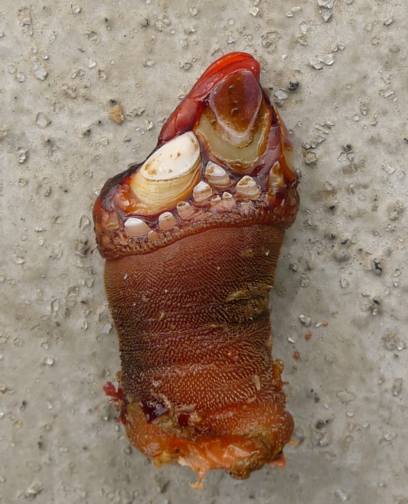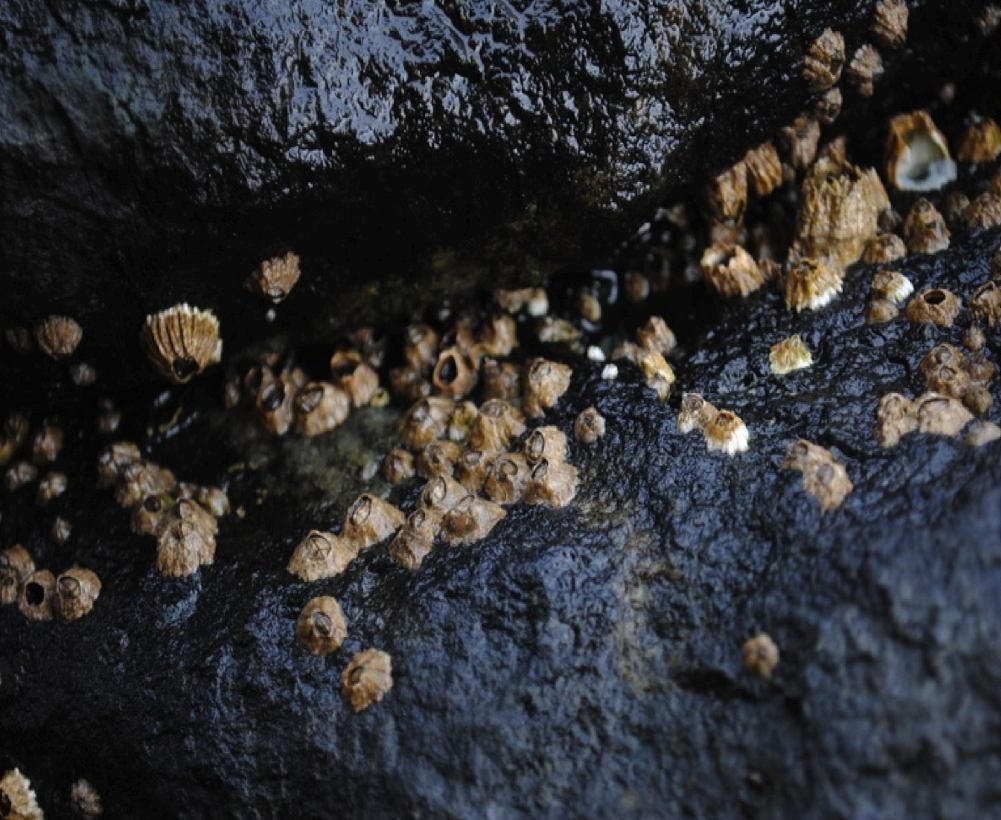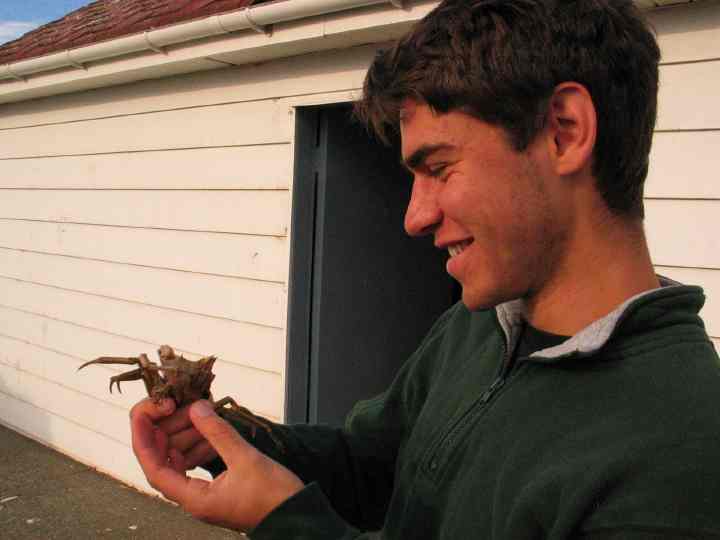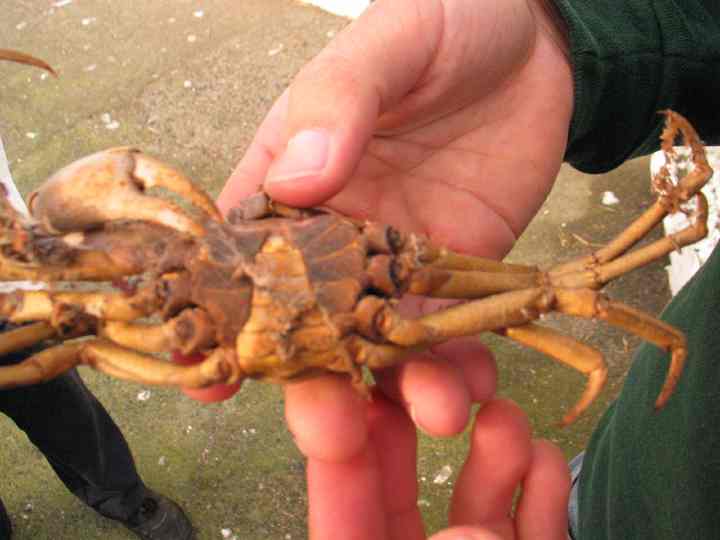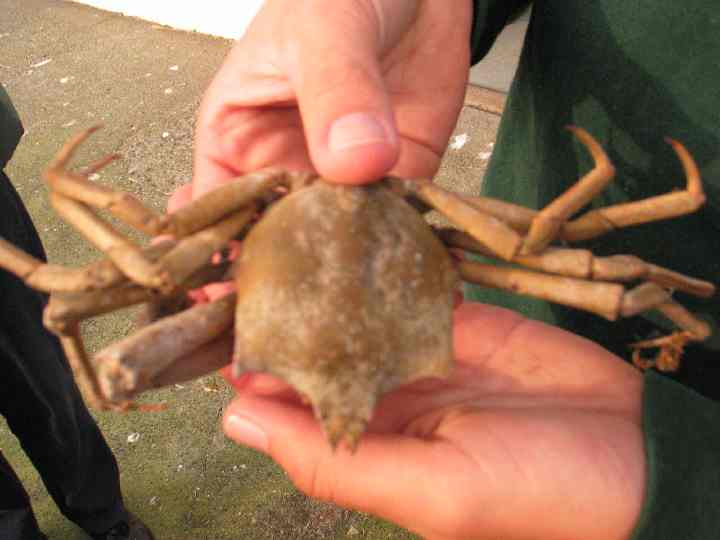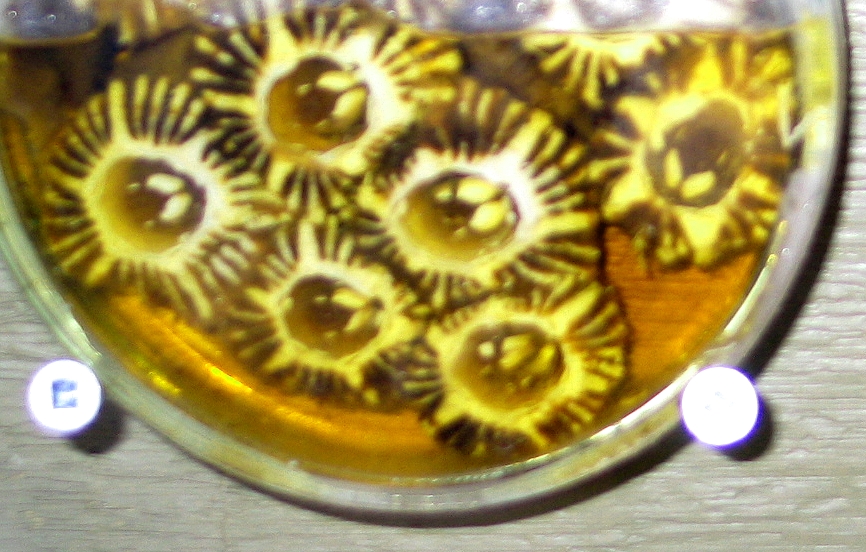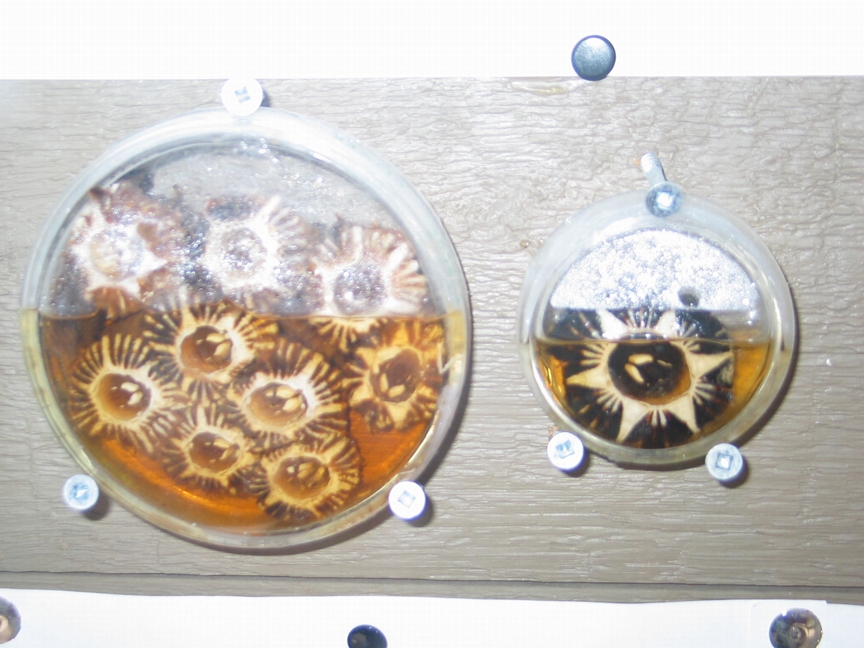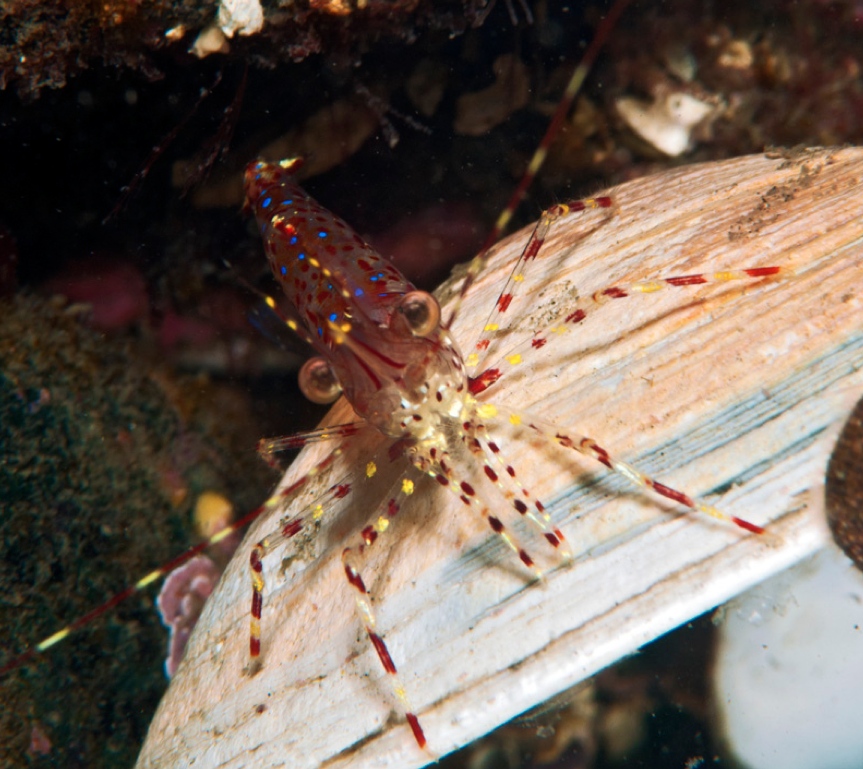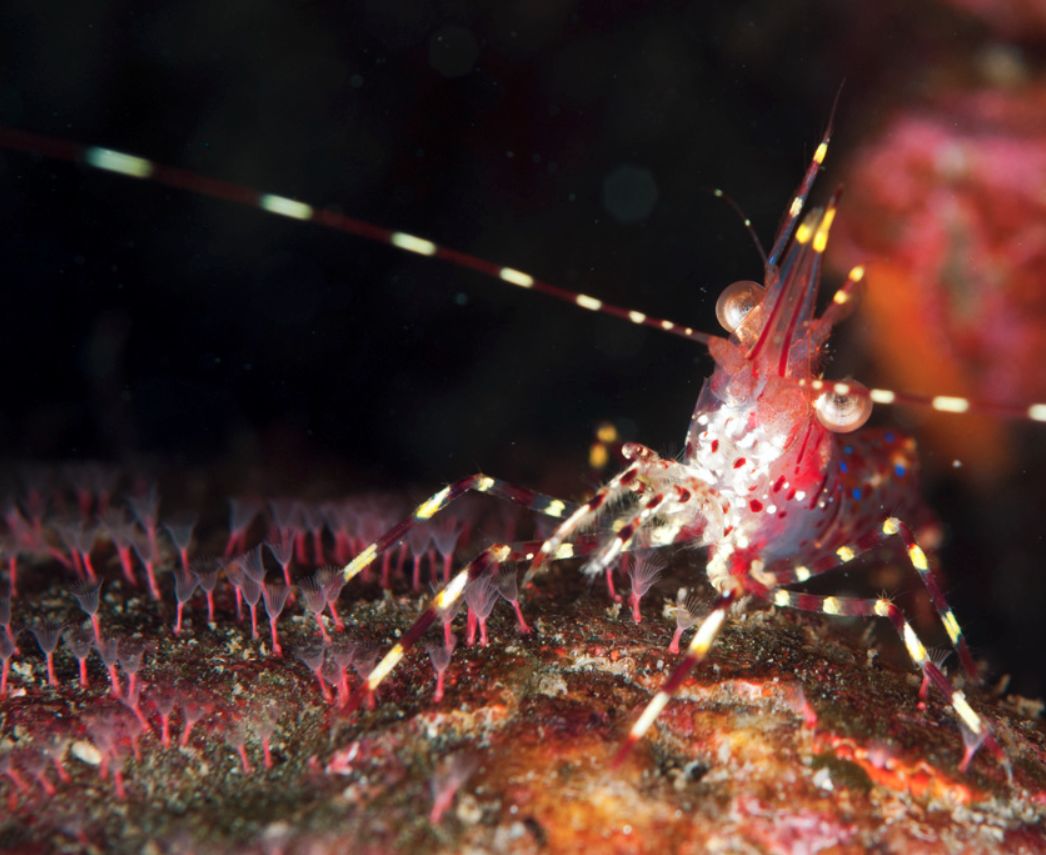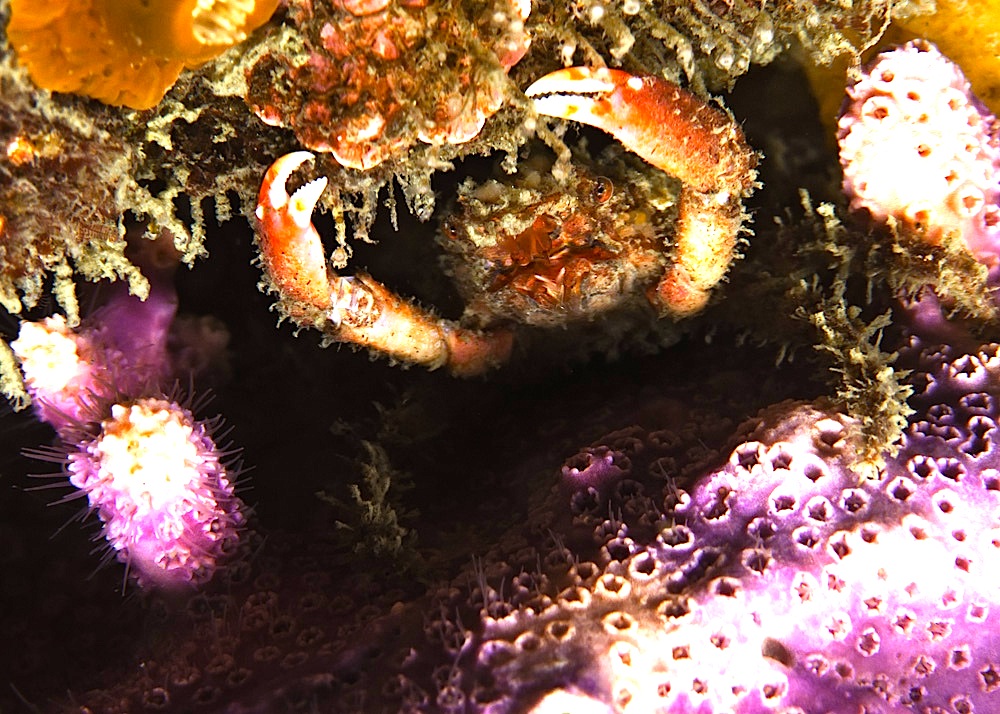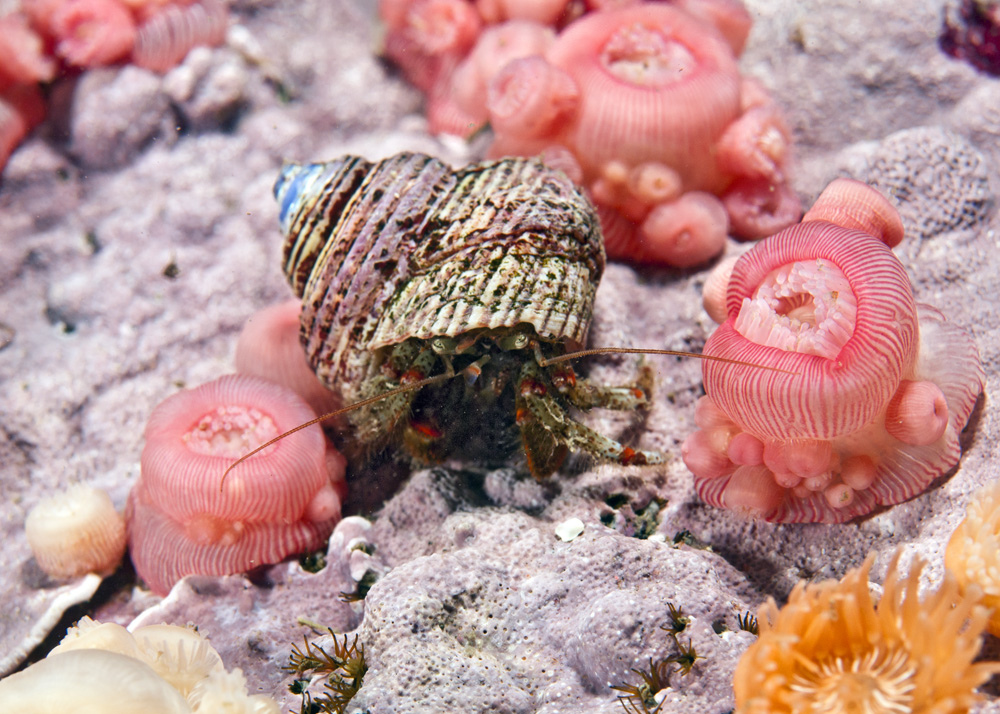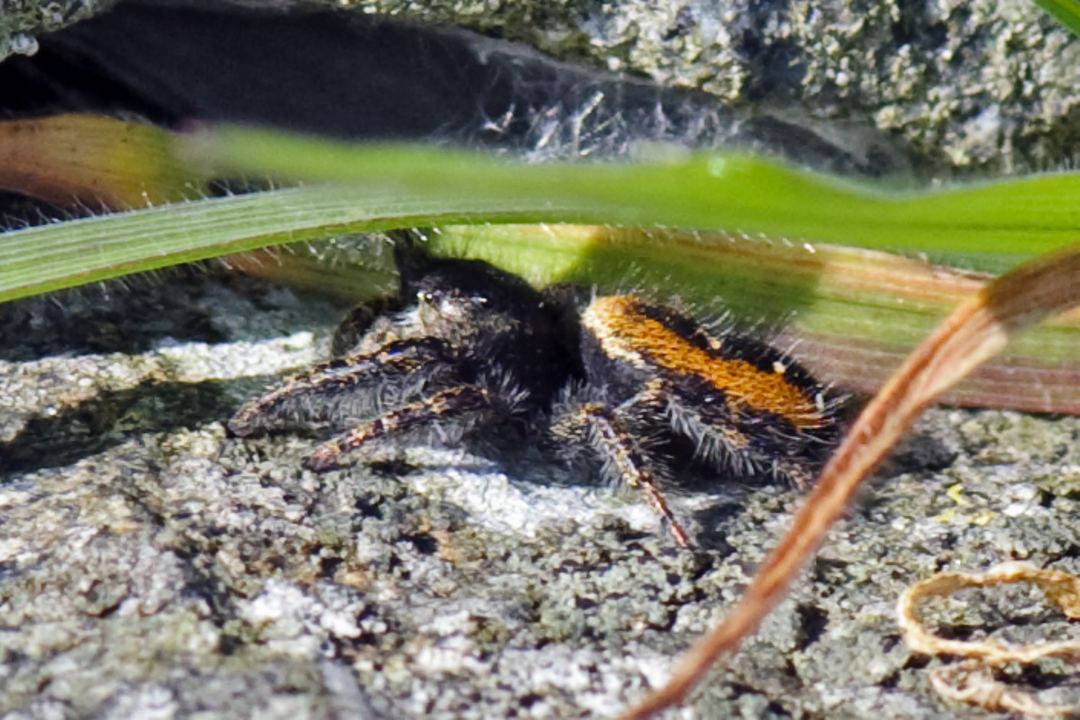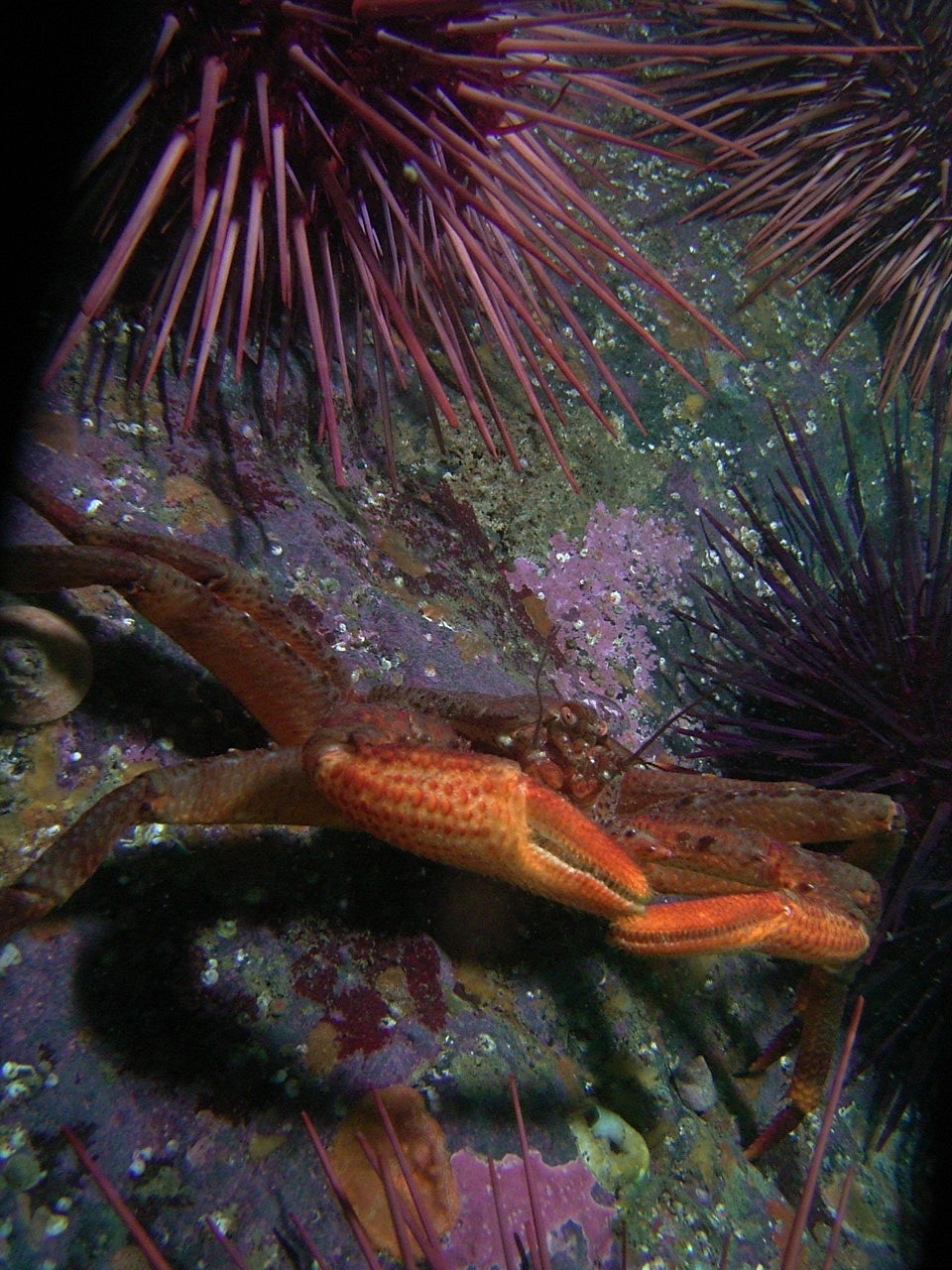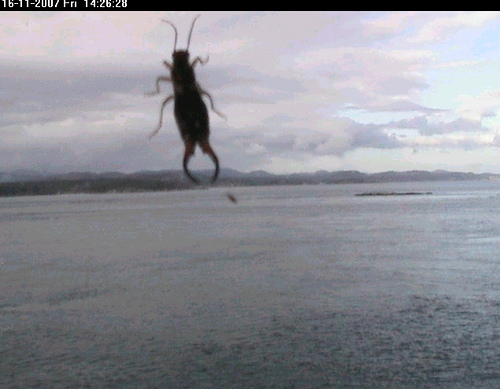| Image by Garry Fletcher,September 7, 2011 |
| This is the first image taken of this variety of gooseneck barnacle at Race Rocks. On the tidal energy generator which was removed in 2011. Two clumps of these barnacles were collected from a join in the housing materials. In Lamb and Hanby, Marine Life of the Pacific Northwest, they state the following:“—Nakwakto goose-neck barnacle, a large and colourful variation of the goose neck barnacle found inlNakwakto Rapids, Slingsby Channel, BC. The glorious red colour is actually the hemoglobin in the barnacle’s blood. The blood is obvious in subtidal specimens like these which do not have black pigment that which protects the sun-exposed populations inhabiting shallow or intertidal zones. Familiar to an ever-increasing number of recreational divers, the unique and isolated population must be preserved via a No-Take Marine Protected Area.”
Link to the regular taxonomy and image file for the more common Pollicepes polymerus |
Domain Eukarya
Kingdom Animalia
Phylum Arthropoda
Order Thoracia
Suborder Lepadomorpha
Family Scalpellidae
Genus Pollicepes
Species polymerus
Common Name: Goose neck Barnacle Nakwakto (variety)
| Other Members of the Phylum Arthropoda at Race Rocks |
and Image File |
 The Race Rocks taxonomy is a collaborative venture originally started with the Biology and Environmental Systems students of Lester Pearson College UWC. It now also has contributions added by Faculty, Staff, Volunteers and Observers on the remote control webcams. The Race Rocks taxonomy is a collaborative venture originally started with the Biology and Environmental Systems students of Lester Pearson College UWC. It now also has contributions added by Faculty, Staff, Volunteers and Observers on the remote control webcams.
September 2011- Ryan Murphy |

